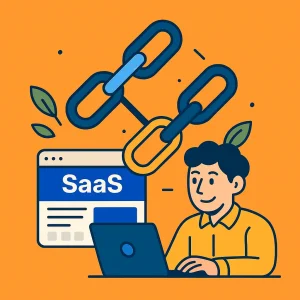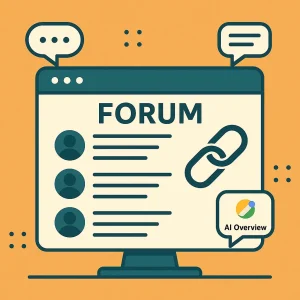
SaaS Link Building Playbook for Faster SEO Wins
Learn proven SaaS link building tactics to rank faster, boost DR, and drive signups with high-quality backlinks.
Worried your backlinks might be hurting instead of helping?
You’re not alone.
Link spam often flies under the radar, quietly sabotaging rankings and triggering Google penalties.
From shady link exchanges to keyword-stuffed anchor texts, link spam is still a trap many fall into. This guide breaks down what it is, why it’s dangerous, and how to keep your site safe.
Link spam is the act of creating backlinks with the sole intention of manipulating search engine rankings.
These links are often irrelevant, forced, or mass-produced—unlike natural links, which are earned organically through valuable content.
Natural links come from trusted sites that genuinely reference your content, while spammy links are often stuffed with keywords, come from unrelated pages, or are part of shady link schemes. Google sees this as an attempt to cheat the system.
That’s why its algorithms—and manual reviewers—go after link spam hard, penalizing sites that try to game rankings instead of earning them.
Link spam comes in many forms, and while some tactics might seem harmless at first glance, they can quietly erode your site’s credibility in Google’s eyes.
Here are some of the most common offenders you need to watch for:
These are the bottom-feeders of the link spam world. Think spammy blog comments with keyword-stuffed anchors, user profiles on forums packed with links, or bots scattering backlinks across low-quality sites.
There’s zero editorial judgment, and most of these links serve no purpose except to manipulate rankings. Google’s algorithms catch them fast and penalize accordingly.
Paying for backlinks without proper disclosure (like using the rel=”sponsored” tag) is a direct violation of Google’s rules.
This includes link placements bought through shady marketplaces, influencers slipping in do-follow links for cash, or websites selling space on pages without reviewing the content they’re linking to. These paid links lack editorial value, and Google knows the difference.
A few link swaps between relevant partners are fine. But when two unrelated websites start linking back and forth aggressively just to pass SEO value, it gets flagged. It’s especially risky when the links have no logical relationship or context.
Overdoing it sends a clear signal: you’re trying to cheat the system.
📚Read more: Unlocking the Power of Reciprocal Links in 2024: Strategies for SEO Success
Private Blog Networks (PBNs) are a classic black hat move. These networks are created solely to pass authority to a “money site.”
Similarly, link farms are clusters of low-quality domains linking to each other (or to clients) with no real content or value. Both are easy targets for spam-detection systems like SpamBrain.
Embedding backlinks into site-wide elements like footers or widgets might sound clever—until Google sees through it. These links often repeat across hundreds of pages and lack relevance or editorial context. If they’re keyword-heavy or deceptive, they’ll trigger penalties fast.
Link spam doesn’t just hurt your rankings—it can wipe out years of SEO work in one update.
Here’s what makes it such a risky move:
Spotting link spam early can save your site from penalties and a long road to recovery.
Here’s how to assess whether your backlink profile is helping—or silently hurting—your SEO.
Start with a deep dive using tools like Ahrefs, Semrush, or Sitechecker. These platforms give you visibility into where your backlinks are coming from and what they look like.
Watch for:
Even a link from a high-authority site can be spammy if it’s placed poorly.
Is the link contextual, surrounded by relevant, useful content?
Or does it feel forced, like it was slapped into a paragraph just to pass link equity?
Low-effort placements with no connection to the surrounding topic are a common red flag.
Too many backlinks acquired in a short window, especially from unrelated or low-quality domains, can trigger suspicion. If your backlink growth looks like a hockey stick without any corresponding content or PR push, something’s off.
Organic link building is steady and natural. Link spam usually leaves behind a messy, rushed footprint.
Keep an eye on link velocity and investigate any unusual spikes.
📚Read more: Link Building 101: Master The Basics and Beyond
Google has been actively cracking down on link spam through algorithm updates like Penguin and the more recent Link Spam Update.
These systems are built to spot unnatural linking patterns and neutralize any ranking benefit they might bring.
According to Google Search Central: “Links intended to manipulate rankings in Google Search results may be considered link spam.”
If detected, your site can be hit with:
Both can be devastating—and recovering won’t be easy.
Preventing link spam is about building a clean, sustainable backlink profile that actually supports your SEO in the long run.
Here’s how to keep your link-building efforts safe and effective.
Not all backlinks are good backlinks. Before agreeing to link placements, check the domain’s relevance, domain authority (DA), organic traffic, and content quality.
Link insertion from a low-quality, unrelated site—even if it has a high DA—is more harmful than helpful. Make sure the site is in your niche, has real readers, and publishes content that makes sense to be associated with.
📚Read more: Niche Relevant Backlinks: Comprehensive Guide (2025)
If a tool promises “thousands of backlinks in 24 hours,” run. Automated link building is a shortcut straight into Google’s penalty box.
Bots don’t discriminate—they’ll place your link on junk directories, fake blogs, and spammy forums. It might look good in a backlink report, but it’s meaningless to Google—and often harmful.
Instead, focus on manual outreach, digital PR, or collaboration with reputable websites. It takes longer, but the payoff is long-term authority and trust.
Repeating the same keyword-rich anchor text across dozens of backlinks is a common rookie mistake. Google expects anchor text to appear natural—just like how a real person would reference another site.
Here’s how to diversify:
This helps keep your profile looking organic and prevents red flags.
A high-quality link is one that’s placed naturally within content that makes sense. Think product mentions in blog posts, references in how-to guides, or expert quotes in articles. If the reader gains value and the link fits the topic, you’re doing it right.
Stay away from links buried in footers, sidebars, or in a random sentence with no real context. Google wants to see links that serve a purpose—not just links that exist to pass SEO juice.
Cleaning up link spam is essential if you want to regain lost rankings or avoid future penalties.
Use this straightforward checklist to remove toxic backlinks and protect your site’s SEO health.
Start with a full backlink audit using tools like Ahrefs, Semrush, or Google Search Console.
Flag links from:
Keep a record of everything you want removed or disavowed.
Once you have your list, try contacting the webmasters of the offending domains. Be direct—ask for the link to be taken down or set to rel=”nofollow”. You won’t always get a reply, but it’s worth trying before taking stronger action.
If no one responds or the site is clearly spammy, use the Disavow Tool in Google Search Console. Upload a .txt file listing all the domains or URLs you want Google to ignore when assessing your backlink profile. This doesn’t remove the links, but it tells Google not to count them.
If your site received a manual action, you’ll need to clean up as much as possible and then file a reconsideration request explaining what you did to fix the problem. Be honest and include your audit details.
Backlink cleanup isn’t a one-time task. Set a monthly or quarterly schedule to check your link profile for new threats and act fast if anything looks off.
Avoiding link spam is about protecting your site’s reputation, rankings, and long-term growth.
Whether you’re running a niche blog or scaling a business site, a clean backlink profile makes all the difference.

Learn proven SaaS link building tactics to rank faster, boost DR, and drive signups with high-quality backlinks.

Learn how to pick a trusted white label link partner for your SaaS agency. Avoid spammy links and scale SEO growth.

Uncover the real value of forum backlinks in 2025—learn smart strategies, avoid risks, and build SEO trust effectively.
